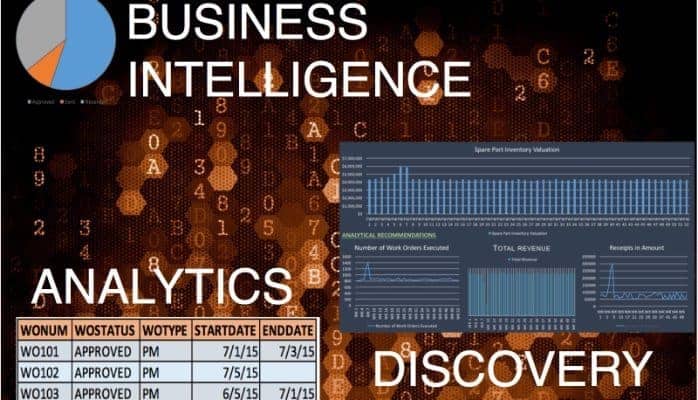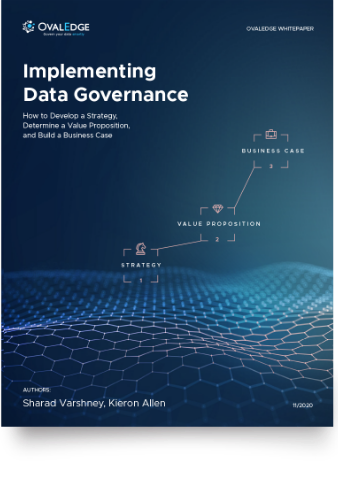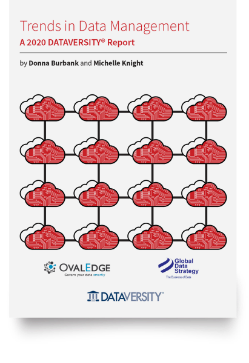Table of Contents
BI, Analytics, and Discovery? Know the difference in the big data era
Before starting from home for the airport, you put your flight number – DL28 on Google search. It shows you the current flight status from Atlanta to London. But another time, you want to ask what are the chances of this flight getting delayed. Google won’t give you any relevant answer, although it has all the flight data.
Imagine another scenario where you are boarding the flight to London and have updated your status on Facebook. A school friend you had lost touch with during the years resides in London and sees your post. You end up having dinner with her in the evening.
These are the three possibilities of how far you can go with data – when a question is very relevant and thought beforehand by R&D / IT (in the above case – Google) and the system is designed to answer that. This system design is referred to as BusinessIntelligence.
But when the system is not designed to answer a question that is crucial, the things we do to get an answer is called Data Analytics. In the third case, when the precise question itself is not known is termed as Discovery.
Existing Dimension Models
For better Business Intelligence, Organizations are building data-warehouses and organizing data in very formal dimension models or cubes so that the desired question can be answered rapidly. But these dimension models cannot be built up fast enough to keep pace with the increasing data needs of today's organizations.
Creating a platform for Analytics and Discovery is a better approach. Through Hadoop technology, it is getting possible to create a platform for Data Analytics and Discovery. Data Lake or Data Reservoir or Enterprise Data Hub are some new terms where you use Hadoop to store all the data. Organizations are hiring Data Scientists to think of questions and find answers using various algorithms, machine learning, etc. The problem here is that few individuals who don’t fully know the nitty-gritty’s of business have to come up with all the possible questions.
What is a Data Lake?
What if there was a repository that could store all the data in its native format until it was needed? Could business users query that data in the way they wanted and get answers quickly? These questions lead to a Data Lake. In a practical sense, a Data Lake is characterized by three key attributes:
Collect anything and everything: A Data Lake contains all data, both raw sources over extended periods of time as well as any processed data.
Let everyone dive in: A Data Lake enables users across multiple business units to refine, explore and enrich data on their terms.
Use your own engine: A Data Lake enables multiple data access patterns across a shared infrastructure – batch, interactive, online, search, in-memory, and other processing engines.
Make the Data Lake as a Discovery Engine
Here are some tips to convert a Data Lake into a Discovery engine. By using these tips, organizations can create a culture of data-driven decision-making. It is important to give access to data not only to your business analysts but also to all the employees. This self-service discovery tool should be a part of the employee portal so that they can get an answer to your questions. This ultimately improves the efficiency of the organization.
1. Eliminate data modeling: Star Schema, Snowflake schema, etc are 20th-century concepts, designed when data storage was super expensive. Now, as storage is dirt cheap, you can keep your data in an original format. Use machine learning concepts to find facts, dimensions, and the relationship between data. If you store your data in the original form you can reach any time dimension you need. All you need to do is to store all the inserts, updates, and deletes on the data.
2. Catalog: If you enter into a library, and there is no catalog available, it is impossible to find a book. The same applies to data. To find data, it is necessary to build a catalog of all the data in your data lake. Advanced algorithms or machine learning techniques are used to build this catalog. It is important to have all the information cataloged and searchable at your fingertips.
3. Collaboration: It is hard to do Discovery alone (there is only one Einstein). Hence, it is important for organizations to provide access to data with a collaboration tool. In our example, when you shared your flight information with your network, you got a nice evening with your friend.
4. Security: Data is an asset to an organization. As organizations are opening data to many employees it is also important that only the right eyes see the data. It is also very important to design a security model so that employees can collaborate securely.
5. Recommendation: In the last decade, companies who build their fortune, mostly because of their recommendation engines. Whether it is Netflix, Facebook, LinkedIn, Google, companies are able to find new customers, customers are able to find new products using these recommendation engines. Every data has some co-relation with other data. These correlations are then converted to recommendations. Further data discovery can become very profound using these recommendation engines.
OvalEdge recognized as a leader in data governance solutions
.png?width=1081&height=173&name=Forrester%201%20(1).png)
“Reference customers have repeatedly mentioned the great customer service they receive along with the support for their custom requirements, facilitating time to value. OvalEdge fits well with organizations prioritizing business user empowerment within their data governance strategy.”
.png?width=1081&height=241&name=KC%20-%20Logo%201%20(1).png)
“Reference customers have repeatedly mentioned the great customer service they receive along with the support for their custom requirements, facilitating time to value. OvalEdge fits well with organizations prioritizing business user empowerment within their data governance strategy.”
Gartner, Magic Quadrant for Data and Analytics Governance Platforms, January 2025
Gartner does not endorse any vendor, product or service depicted in its research publications, and does not advise technology users to select only those vendors with the highest ratings or other designation. Gartner research publications consist of the opinions of Gartner’s research organization and should not be construed as statements of fact. Gartner disclaims all warranties, expressed or implied, with respect to this research, including any warranties of merchantability or fitness for a particular purpose.
GARTNER and MAGIC QUADRANT are registered trademarks of Gartner, Inc. and/or its affiliates in the U.S. and internationally and are used herein with permission. All rights reserved.








